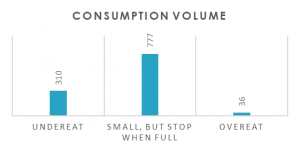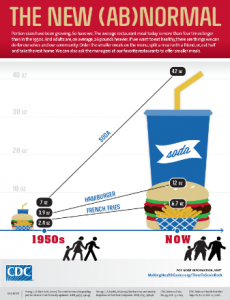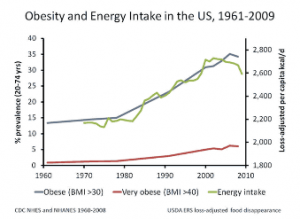A frequent knock on the HRA is that it provides self-reported data. However, the fact that the data are self-reported provides its own insight.
 For example, in a recent HRA for a client with just over 1,000 employees responding, we asked a question to understand their own perceptions of consumption and overconsumption: “Do you overeat, eat small but stop when full, or undereat?”
For example, in a recent HRA for a client with just over 1,000 employees responding, we asked a question to understand their own perceptions of consumption and overconsumption: “Do you overeat, eat small but stop when full, or undereat?”
As you review these results, let me point out that this group showed overweight and obesity levels that were only a bit worse than the national average: 45% of them were obese, and 25% were overweight.
 This level of overweight and obesity stood in sharp contrast to their response to the overconsumption question. Almost no one in this entire population (less than 0.4%) perceived that they were overeating. And it is this enormous mismatch between a population’s psychological perception and their physiological caloric need which suggests the next steps to take with this group.
This level of overweight and obesity stood in sharp contrast to their response to the overconsumption question. Almost no one in this entire population (less than 0.4%) perceived that they were overeating. And it is this enormous mismatch between a population’s psychological perception and their physiological caloric need which suggests the next steps to take with this group.
First of all, it’s well known that our portions have increased over time. 50 years ago, a hamburger was the size of your palm, whereas today it’s roughly the size of your head. Coffee came in an 8 ounce ceramic mug, rather than today’s venti-sized containers. It’s not just the food purchased in restaurants either. The dinner plates we serve our food upon have increase by 1 inch per decade since the 1960’s.
The relationship between increasing portions and increasing weight is shown in the CDC data here. These two factors have increased in lock step, as obesity has risen from 12% in 1960 to our current health catastrophe in which over two-thirds of the population are either overweight, obese, or morbidly obese.
Despite this obvious linkage, the HRA data show how cultural norms have shifted. Almost everyone  believed they were consuming an appropriate amount of food, despite their level of overweight. And it is this perception of what is normal that has also become skewed over time.
believed they were consuming an appropriate amount of food, despite their level of overweight. And it is this perception of what is normal that has also become skewed over time.
The outcome indicates that wellness directors need to do more than just another walking program or Zumba class, we also have to realign the perceived cultural norm.
Redefining such normative perceptions is a far more fundamental issue, and so it is one that is more difficult to attain in the short term. That said, this addresses the actual problem rather than its symptoms, and will be more effective in the long run.



